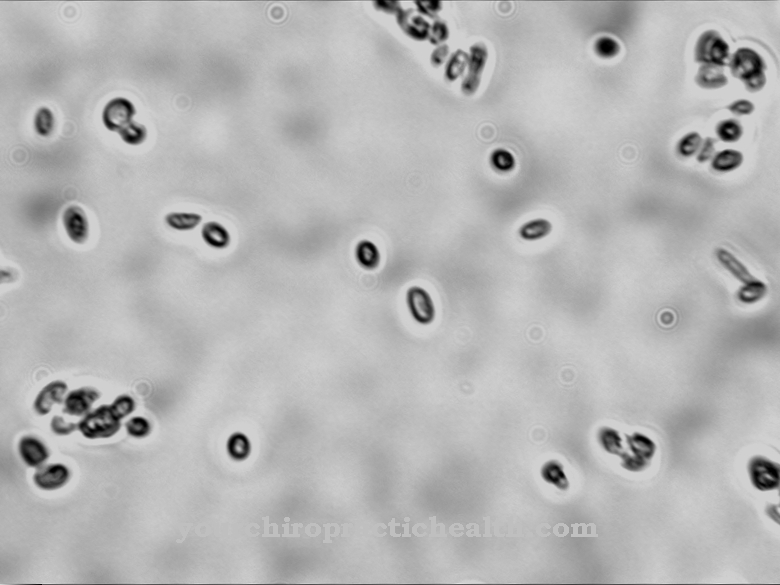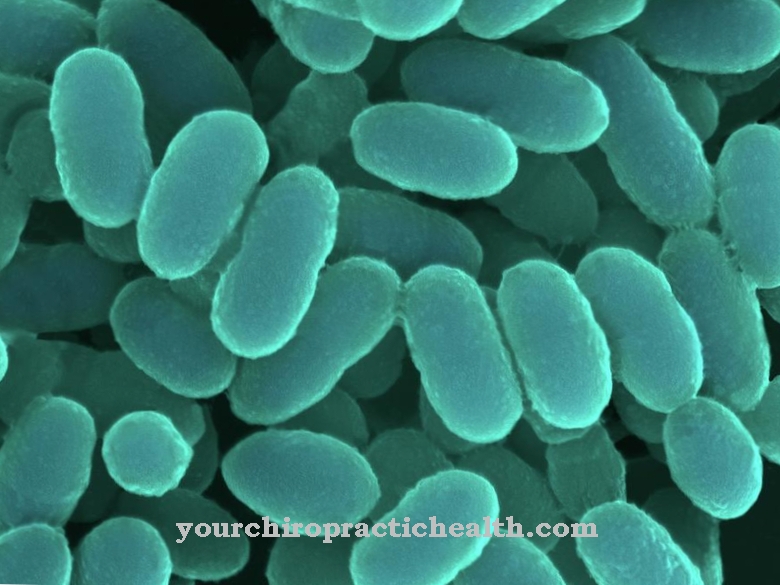Enterobacteria is called a family of bacteria that includes many different species. Sometimes they are part of the natural intestinal flora, but can also trigger various diseases.
What are enterobacteria?
Enterobacteria (Enterobacteriaceae) is the collective name for different types of bacteria. They are mainly found in the intestines of humans and animals. Some types of rod-shaped bacteria are responsible for the development of serious illnesses such as typhoid, plague or dysentery.
Other subforms to which u. a. Escherichia coli counts, only cause infections if they penetrate into areas of the body where they do not belong. This can be the urinary tract or the eyes.
Enterobacteria are assigned to the class of Gammaproteobacteria and belong to the division (Divisio) of Proteobacteria. There they form their own family of bacteria. The name enterobacteria comes from the ancient Greek term "enteron", which means intestine. Numerous enterobacteria are typical inhabitants of the intestine. However, many free-living bacteria that are not found in the intestine are also included in the Enterobacteriaceae family.
Occurrence, Distribution & Properties
A large number of enterobacteria live in the intestines of humans and animals. But they can also be found in the environment in water or in the ground. One of the most important representatives of the Enterobacteriaceae is Escherichia coli, which is also known as the coli bacterium. Other important genera are Proteus such as Proteus mirabilis and Proteus vulgaris, Klebsiella such as Klebsiella pneumoniae, Salmonella, Shigella, Cronobacter, Citrobacter, Enterobacter, Erwinia and Edwardsiella. The most feared representatives are the Yersinia, as Yersinia pestis can cause the plague.
Most enterobacteria are gram-negative anaerobic. They have the appearance of a rod and reach a length between 1 and 5 µm. Their diameter is around 0.5 to 1 µm. Enterobacteria do not have oxidase, which makes them easy to distinguish from other bacteria.
Most species have flagella that allow them to move. In some enterobacteria genera, however, no mobility is possible. The enterobacteria are considered to be gram-negative, as their cell wall consists of a few murein layers and a second outer membrane.
The metabolism of the enterobacteria takes place optionally anaerobically. This means that they can break down substances via oxidation in the presence of oxygen. Fermentation can be carried out without oxygen.
Two anaerobic metabolic pathways are used in order to be able to differentiate between the individual species. These are mixed acid fermentation and 2,3-butanediol fermentation. The mixed acid fermentation produces by-products and end products such as acids. These primarily include lactic acid, succinic acid and acetic acid. In contrast, there is a lack of butanediol. In the course of 2,3-butanediol fermentation, the fermentation process produces fewer amounts of acid. Instead, larger amounts of the alcohol 2,3-butanediol are produced. The intermediate product acetoin is one of the characteristics of 2,3-butanediol fermentation. There is also a significantly higher production of CO2 (gas).
Butanediol fermentation is typical in enterobacteria such as Klebsiella, Serratia, Erwinia and Enterobacter. On the other hand, mixed acid fermentation occurs in Proteus, Escherichia coli and Salmonella.
On the cell surface of the enterobacteria there are antigens that can be used to identify and subdivide them. So there are u. a. F, H, K and O antigens.
Meaning & function
Some enterobacteria such as Escherichia coli are a natural component of the human intestinal flora. The first bacterial strains colonize the human body shortly after birth. Up into adulthood, countless representatives of the Enterobacteriaceae cavort in the large and small intestines, with considerably more bacteria than the small intestine in the large intestine.
The intestinal flora plays a decisive role in the defense against pathogens. The local microorganisms influence the supply of vitamins, support digestion, stimulate intestinal peristalsis and supply the epithelial layer of the intestine with energy.
Illnesses & ailments
However, enterobacteria can also lead to various diseases. For example, enterotoxic Escherichia coli, salmonella and shigella are often the cause of diarrheal diseases.
In contrast, enterohaemorrhagic Escherichia coli (EHEC) and Yersinia can cause inflammation of the intestines (enteritis), which is accompanied by bloody diarrhea. Salmonella diarrhea is mostly caused by spoiled food. Vomiting often sets in at the same time. Typical sources of infection are pork, beef, and poultry, as well as mayonnaise, raw eggs, and creams.
Urinary tract infections are mostly caused by Escherichia coli, Proteus, Serratia, Klebsiella, Morganella, Citrobacter and Providencia.
With a bladder infection (cystitis) the bacteria rise from the intestine via the urethra into the urinary bladder. About 80 percent of all bladder infections are caused by Escherichia coli. Women are particularly affected by the disease. The urethra is shorter in women than in men. Because of this, the bacteria only have to travel a shorter distance. Furthermore, the female urethral opening is located closer to the anus than in the male sex.
Enterobacteria such as Klebsiella are often the cause of bacterial pneumonia. It is caused by the subform Klebsiella pneumoniae. Yersinia species such as Yersinia enterocolitica, Yersinia pseudotuberculosis and Yersinia pestis are also of concern. They cause inflammation of the large and small intestines (enterocolitis), inflammation of the lymph nodes (lymphadenitis) and the plague. This highly contagious disease was feared as the “black death” even in ancient times, as it claimed numerous victims. Today, however, the plague is very rare. A distinction is made between bubonic plague, pulmonary plague and plague sepsis.



























